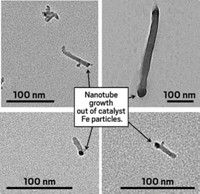Advertisement
Grab your lab coat. Let's get started
Welcome!
Welcome!
Create an account below to get 6 C&EN articles per month, receive newsletters and more - all free.
It seems this is your first time logging in online. Please enter the following information to continue.
As an ACS member you automatically get access to this site. All we need is few more details to create your reading experience.
Not you? Sign in with a different account.
Not you? Sign in with a different account.
ERROR 1
ERROR 1
ERROR 2
ERROR 2
ERROR 2
ERROR 2
ERROR 2
Password and Confirm password must match.
If you have an ACS member number, please enter it here so we can link this account to your membership. (optional)
ERROR 2
ACS values your privacy. By submitting your information, you are gaining access to C&EN and subscribing to our weekly newsletter. We use the information you provide to make your reading experience better, and we will never sell your data to third party members.
Environment
Switching To Biodiesel May Have Little Health Benefit
Air Pollution: The net human health impact of regulations mandating use of biodiesel blends is minimal compared to benefits from stricter emission controls
by Janet Pelley
November 5, 2013

Laws in Canada and the U.S. mandate that, in the coming decade, a certain portion of diesel fuel be derived from renewable sources. Known as biodiesel, this fuel burns more cleanly than petroleum-derived diesel. Still scientists have yet to estimate the widespread health impacts as truck fleets switch to renewable fuel blends. A new study predicts that the use of biodiesel blends in Canada will provide minimal health benefits compared to the benefits from a new generation of vehicle emission controls (Environ. Sci. Technol. 2013, DOI: 10.1021/es4023859).
A 2007 U.S. law stipulates that at least 36 billion gallons of biofuel per year be used by 2022. And, in 2011, Canada passed a law requiring that diesel contain at least 2% renewable content. These renewable fuel standards take aim at climate change, since pure biodiesel cuts greenhouse gas emissions from vehicles by more than 50% compared to petrodiesel. Biodiesel exhaust is also thought to be easier on the lungs than petrodiesel exhaust: Compared to petrodiesel, a blend of 20% biodiesel and 80% petrodiesel reduces particulate matter and carbon monoxide emissions by nearly 20%.
But there has been little work done to understand how these changes in individual vehicle emissions impact ambient air pollutant concentrations and human health, says Mathieu Rouleau, a biologist at Health Canada and lead author of the study. So a Health Canada advisory committee directed Rouleau and his colleagues to undertake continent-wide modeling of biodiesel emissions, including O3, CO, NO2, SO2, and fine particulate matter, to determine the health impacts of widespread biodiesel use in Canada.
The researchers used three models to predict air pollutant concentrations across all of Canada, including from vehicle exhaust, and then to forecast how many Canadians will die or become ill from air pollution each year. Using those models, the scientists compared health outcomes for two hypothetical scenarios, one in which the heavy duty diesel fleet uses only petroleum diesel fuel and another in which the fleet uses a blend of 20% biodiesel. The team also wanted to compare these outcomes to ones caused by regulations on vehicle emissions. Any new truck or bus sold in Canada and the U.S. after 2007 must meet stringent new exhaust controls. So the study ran the two scenarios for 2006, when no trucks met the standards, and in 2020, when an estimated 70% of the heavy duty fleet will meet the new standards.
In the 2006 case, concentrations of air pollutants across Canada dropped by less than 1% if trucks and buses switched from petrodiesel to a 20% biodiesel blend. The same switch in 2020 cut contaminant levels by less than 0.2%. These changes are so small that ambient air monitoring probably wouldn’t be able to detect them, Rouleau says.
The changes in health outcomes were also small. In the 2006 case, the switch to biodiesel would save seven lives across Canada. In 2020, the switch to biodiesel generated two more deaths than petrodiesel due to reactions in the air between emitted contaminants that generated secondary pollutants.
The drops in air pollution from biodiesel use are so miniscule in part because even though trucks and buses contribute more than 50% of on-road pollution, they account for less than 2% of total air pollution, Rouleau says. In addition, by 2020 most trucks and buses will be using advanced tailpipe controls that cut exhaust pollutants by more than 95%—a far greater cut than that achieved by the cleaner biodiesel fuel.
The study is valuable because governments are mandating use of biofuels but they are not always thinking about the policies’ overall impacts, says Andre Boehman, a mechanical engineer at the University of Michigan, Ann Arbor. Governments are mainly concerned about displacing petroleum and promoting domestic production of renewables, he says. Because the modeling did not uncover significant negative impacts, Boehman says the study may reassure policymakers that biofuels are a viable alternative to petrodiesel.





Join the conversation
Contact the reporter
Submit a Letter to the Editor for publication
Engage with us on Twitter